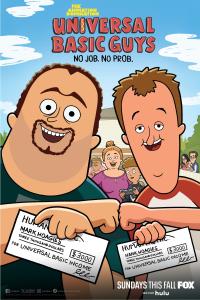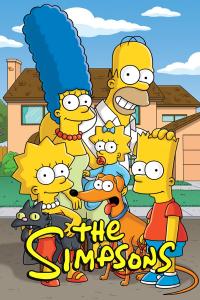Torrent details for "Understanding Cognitive Biases" Log in to bookmark
Controls:
Language:
 English
EnglishTotal Size:
9.08 GB
Info Hash:
95ed05d547d7d03b9ce962e9418b3045e16f30c1
Added By:
Added:
04-02-2023 04:16
Views:
590
Health:

Seeds:
4
Leechers:
2
Completed:
192

Description
As you read this sentence, your brain has just processed about 20 million bits of information. In fact, every second of every day, your brain processes about 11 million bits. And yet, that astonishing number just isn’t enough to get you through your day. Consequently, your brain takes some shortcuts—and it’s those shortcuts, called heuristics, that make it all work.
Some shortcuts are completely benign and helpful—such as your ability to recognize your child even if half his face is in shadow or your ability to imagine tomorrow even though you will never actually see it. But other heuristics are faulty and can bias your decision-making inappropriately. In Understanding Cognitive Biases, you will learn how to recognize these biases for what they are, counteract them when necessary, and even use them to your advantage in some instances.
In 24 fascinating lectures, Dr. Alexander B. Swan uses examples from psychology experiments, history, politics, movies, TV, comics, social media, and more to illustrate dozens of cognitive biases that affect us all. You’re not alone in your sometimes irrational judgments and interpretations of events or people. But you can learn how to make better decisions—no matter what shortcuts your brain wants to take!
How Many Biases?
Although it might come as a shock, research shows that each of us has close to 200 biases. Unlike a prejudice, which usually means a preconceived negative opinion about a group or class of people, you can be biased in favor of something or against it. For example, you might be biased toward healthy foods, the color blue, or a certain type of music. We each have our own preferences that are unlikely to cause any negative effects in our decision-making.
The shortcuts of cognitive biases, however—when the brain fills in gaps of solid, reliable information with a lot of guesswork for efficiency’s sake—can lead to errors of memory and judgment, and can cause faulty decision-making with unintended, even dire, consequences. For example, take confirmation bias. This tendency to consider only information that confirms our existing beliefs can cause us to make incorrect assumptions about the cause of a coworker’s behavior, misinterpret experimental data, or even make disastrous engineering decisions resulting in injuries … or worse.
In this course, you will explore the causes of confirmation bias, our use of stereotypes, our predisposition toward the status quo, and many more biases, including some you may have never heard of:
Pareidolia. This is our tendency to perceive meaning from vague and random stimuli. Our brains are primed to find patterns, especially faces. In 1976, when the Viking 1 spacecraft photographed the Cydonia region of Mars, many people’s pareidolia caused them to see a face in the landscape that became associated with a supposed Martian civilization.
Cryptomnesia. This is a tendency for a person to believe they created a particular thought or idea when the actual source was a memory. This occurs when your brain makes a “source monitoring error”—storing a memory without storing its source. One of the most famous examples of cryptomnesia is Helen Keller’s publication of The Frost King; although she was sure her book was an original work, it was not.
Reactance. Remember back to your teen years when you wanted to do the opposite of whatever you were told to do? Although you didn’t know it at the time, you were exhibiting reactance bias, the tendency to act in ways that are opposite to the rules in place, especially when you believe your freedom will be curtailed. One of the problems with this very common bias is that your reactance could lead you to do something unsafe; sometimes, the rules are there for a reason.
Unraveling the Bias
If these cognitive biases are such an ingrained aspect of our brain functioning, can we have any control over them? Absolutely. In Understanding Cognitive Biases, Dr. Swan will discuss many tactics you can—and should—use to avoid the consequences of unchecked cognitive biases. These include:
Increasing Your Awareness of Biases. We need to be aware of cognitive biases and recognize them when they show up. It’s amazing how easy it is to identify cognitive bias when it’s exhibited by someone else, but it’s much more difficult to recognize it in ourselves. However, this is an important first step in fighting off faulty reasoning and associated outcomes.
Slowing Down. Humans use dual process thinking. We have fast, automatic, and heuristic processing to keep us moving efficiently from one thing to the next, which is where most of our cognitive biases show up. But we can also access slow, deliberate, logical processing—if we want to. Are we motivated to look for solid, valid information outside our own belief system, even if it takes a bit of effort? Or are we content to just confirm our own worldview, whether or not it’s accurate?
Journaling. For those who journal, and those who have been wanting to try this wonderful habit, writing down some of your activities, thoughts, and concerns can be a great way to combat cognitive bias. For example, journaling during a multi-day vacation can help unravel the peak-end bias that affects how we retain memories; having group members journal their individual experiences and thoughts can help work against groupthink; and journaling every day can also help prevent the creation and maintenance of false memories.
Using Cognitive Bias to Accomplish Your Goals
Some of the heuristics your brain uses to make up for its “slow” processing can also be used to help you reach your goals. These include:
Testing Effect, Generation Effect, and Spacing Effect. Understanding how to use these memory phenomena to your own benefit can help improve your studying and learning and increase memory retention.
Observer Bias. The next time you’re trying to teach someone anything at all, you can certainly use the cues of observer bias—where we see what we expect rather than what is necessarily there—to improve response and learning.
Status Quo Bias. While this bias can sometimes work against us by making us afraid of change, we can also use it to examine situations closely and choose the status quo when it really is to our benefit.
Dr. Swan leaves the course asking one final and impactful question. Once you understand how many cognitive biases work in our lives (biases that “sit quietly in the dark”), their evolutionary causes, and their many potential negative impacts, where do you want to go from here? Do you want to allow the status quo bias to keep every other cognitive bias in place or, with your new knowledge, do you want to begin working on strategies to mitigate and reduce their impacts? The choice is yours.
Released 1/2023















































